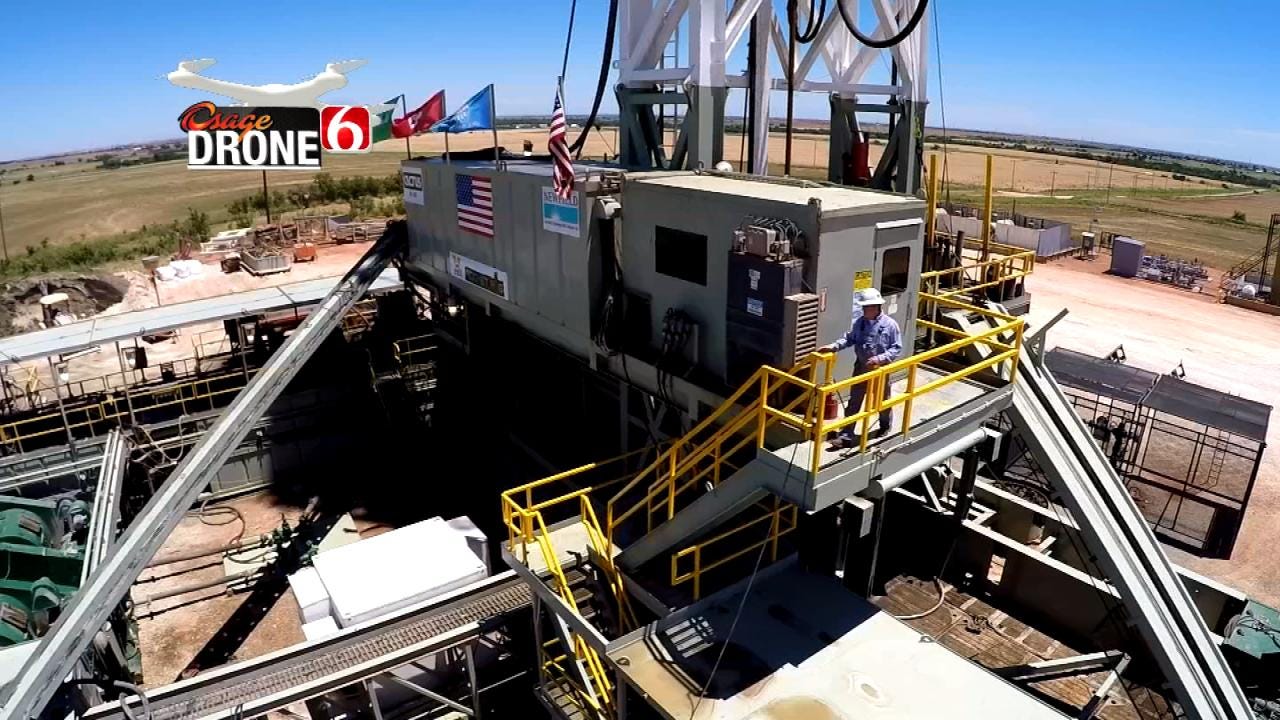Oklahoma At Work: Economic Overview
<p>Assorted publications have been consistent recently in ranking Oklahoma's economy toward the bottom of the heap. How did we get here, and what are the signs of improvement?</p>Wednesday, July 19th 2017, 12:56 pm
Ranking economic performance is not an exact science. Methods can vary and the interpretation of data can be subjective. And yet, despite the potential for variation, assorted publications have been consistent recently in ranking Oklahoma's economy toward the bottom of the heap.
The explanation for the state's economic downturn is relatively clear, as are the signs of improvement. Perhaps the more important question to try and answer right now is how is this impacting job opportunities in the state, in both the short-term and the long-term.
How We Got Here
As the nation began slowly climbing out of the great recession eight years ago, Oklahoma climbed, too. Here, the recovery was boosted by the oil and gas sector, which was riding the wave of increased production afforded by hydraulic fracturing, and crude oil prices that hovered near $100/barrel for almost two years.
But when price of crude plummeted toward the end of 2014, Oklahoma's economy went with it.
"We had a modest recession," said Lynn Gray, "a mild to modest recession here in Oklahoma."
Gray is the director of economic research and analysis, as well as, the chief economist at the Oklahoma Employment Security Commission.
"When you look at the job declines in those two years, 2015 and 2016, certainly it was in oil and gas, where you lost a little over a third of the jobs there," Gray said.
That's more than 22,000 oil and gas jobs that dried up. In addition, there were about 16,000 manufacturing jobs, many of them tied to oil and gas, that also went away. As a result, in July 2016, Oklahoma's unemployment rate hit 5.0 percent, exceeding the national jobless rate (4.9%) for the first time in 26 years.
Hard Times At The Capitol
The downturn, in what economists refer to as the mining sector, had an almost immediate impact on state revenues.
Having peaked at $1.25 billion in FY 2008, tax collections on energy production had dwindled to $350 million by the end of FY 2016. Governor Fallin and legislative leaders blamed that decline and the loss of other associated revenues, in large part, for successive revenue shortfalls of $600 million (FY 2016), $1.3 billion (FY 2017), and $900 million (FY 2018).
As a result, the legislature has had to cut most state agencies to the bone, and has been unable to fund education at the level that economic development professionals feel is needed grow the state's work force.
"Yes, it does impact the ability to train workers to be able to have the kind of educated work force that we need," said Fred Morgan, President & CEO of the State Chamber of Commerce,
Morgan says this is a major concern. Their members say they have jobs, but not enough skilled people to fill them. For the sake of the state's long-term economic success, Morgan says this has to be addressed, and he says the Chamber is trying.
"To make sure that people leaving high school are either ready for college or for some kind of profession," Morgan stated, "and that they have the soft skills needed by the business community."
Urban Versus Rural
Another factor that contributes to the state's lack of skilled workers is the relatively low percentage of Oklahomans who live in urban areas. Nationally, economists say, about 80 percent of people live in metropolitan areas. In Oklahoma, it's about 66 percent.
Oklahoma City University Economics professor Russell Evans says the explanation for this is pretty simple: Oklahoma has two legacy industries, farming and mining, and thriving Native American operations, all of which tend to prop up rural communities and run counter to the urbanization trend.
But Evans says this presents the state with a real challenge.
"Do you fight back against those natural forces that are pushing urbanization, or do you embrace that and encourage urbanization? But as urbanization occurs, how do you make sure that appropriate care is being given to rural economies? That's going to be a challenge."
Russell believes state leaders would be wise to respond to this challenge and get on the same page with regard to future economic development priorities. The policies emanating from the Capitol would be more coherent and effective, Evans says.
Either way, the natural forces encouraging growth in the state's urban areas remain at work, especially along the I-35 corridor. Economists say Oklahoma benefits both from a general movement of economic activity from the northeast U-S to the Southwest, and from being just up the road from Dallas.
"The number of counties that now separate the south end of Oklahoma City and the north end of Dallas, in terms of their rapid growth areas - we're talking about two or three counties that separate the two from just running into each other," said Russell Evans, Oklahoma City University economics professor.
Economic Outlook
And there are other reasons for optimism.
"The recent information is positive," said Lynn Gray, at OESC. "We are seeing some good news in a lot of ways."
Recent economic indicators are improved -- the state unemployment dropped to 4.3 percent this spring, once again below the national rate, and the oil and gas industry is again adding jobs, up 13 percent so far this year.
"I'm quite bullish on the state's economic future," said Russell Evans. "I'm optimistic that if we can just avoid any bad headlines, that this next year will be better."
And over the next decade, according the OESC, overall job growth is projected at nearly nine percent.
Here are the details of the latest 10-year jobs forecast:
More Like This
July 19th, 2017
September 29th, 2024
September 17th, 2024
Top Headlines
December 13th, 2024
December 13th, 2024
December 13th, 2024
December 13th, 2024










